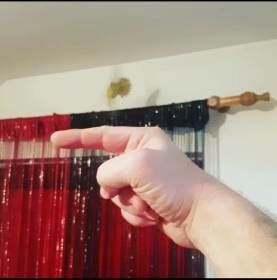There are around 353 species of parrots (in the order Psittaciformes) that are still alive in the world today. They vary in size from the tiny parrotlet (7cm) to the largest Macaw (100cm).
Parrots are very popular pets, loved because of their bright-colored plumage, intelligence, and training potential. Many of the species are excellent mimics.
They mainly originate from tropical and sub-tropical regions in the world. They are found in various habitats, including savannah, desert, and tropical rainforest.
All parrots possess short necks, powerful hooked beaks, and zygodactyl feet (digits 1 and 4 faces backward, digits 2 and 3 forwards) capable of grasping objects.
Popular small parrots

Budgerigars (Melopsittacus undulates)
Other names: ‘Budgies’ and Common pet parakeet
Size: Around 15-20cm long
Lifespan: 5-10 years
Cost $50 -$150
Budgerigars originate from Australia and come in a wide variety of colors. They are happy as a single cage bird (as long as they get plenty of human interaction). Still, they can also be kept in pairs or in a larger group in an aviary. They are not noisy, but some can develop an extensive vocabulary. Compared to other parrots, they show fewer behavioral problems.
Budgies began gaining popularity with the broader European public around 1850. However, they didn’t experience real popularity in the United States until the 1950s.
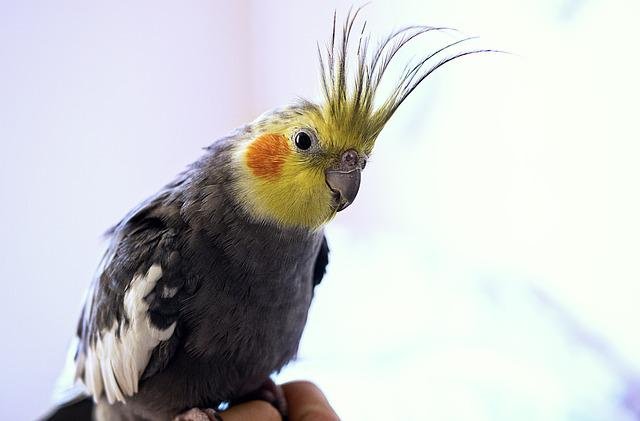
Cockatiel (Nymphicus hollandicus)
Other names: weiros/quarrians
Size: Around 28-30cm long
Lifespan: 10-15 years
Cost $175 – $475
Like Budgies, Cockatiels also originate from Australia. Due to their simple husbandry requirements, they are sought-after pets for new bird owners. In fact, they are the number one pet bird in America. They can be somewhat vocal and learn to copy sounds and words. They are social and can form strong bonds with their owners. As with budgerigars, they are less likely to display the behavioral problems seen with larger parrots and are relatively undemanding in comparison.
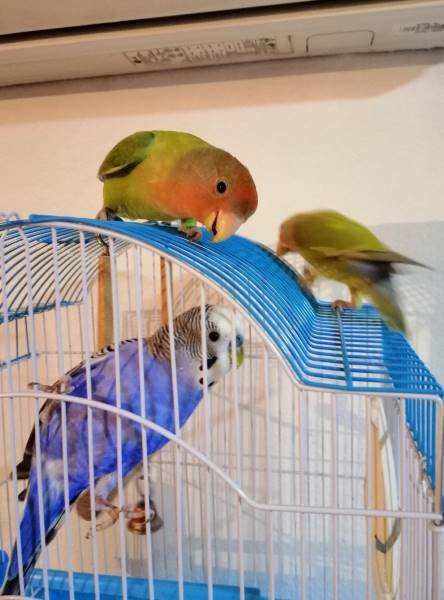
Lovebirds (Agapornis family)
Other names: rozenkolis
Size: Around 15cm long
Lifespan: 10-20 years
Cost $150-$300
Most Lovebird species are native to Africa. They are named after the close bond they can form with a single partner. However, contrary to popular belief, the other partner does not necessarily need to be another lovebird. The legend that they will die if they are separated is not true. They can live happy lives as long as they have plenty of human interaction and environmental enrichment.
They have a reputation for being aggressive. In particular, the female lovebird can become highly defensive of her territory.
Lovebirds can be heard whistling and singing all day long and are especially vocal at dawn and dusk. Despite this, they don’t tend to talk and mimic words.
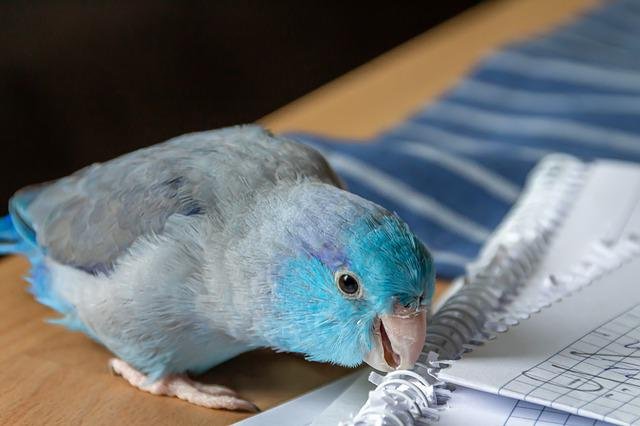
Parrotlet (Forpus coelestis and Forpus passerines)
Size: 7-12cm
Lifespan: 20-30 years
Cost $200 – $550
Parrotlets originate from Mexico and Central and South America. There are several species, but only two are commonly kept as pets, the Pacific parrotlet (Forpus coelestis) and the green-rumped parrotlet (Forpus passerinus).
They can mimic and learn quite a few words, but they aren’t the best talkers in the parrot family. Generally, they aren’t noisy so that neighbours won’t be disturbed.
The parrotlet is dimorphic, meaning there is a visible difference between the sexes, making it easy to choose pairs among mature birds.
They are popular pets as they as said to have the personality of a large bird in a small bird’s body.
Popular medium-sized parrots

Quaker Parrot (Myiopsitta monachus)
Other names: Monk Parakeet
Size: 28cm
Lifespan: 20-25 years
Cost $300 -$1500
Quakers are one of the most popular kept parrots due to their low cost, availability, and excellent mimicking abilities. They are native to South American subtropical areas. However, they adapt well to urban landscapes and have set up large wild colonies throughout North America and Europe. Due to the risk of wild populations forming, several states have issued a ban on keeping them.
Quakers are avid chewers, so owners must provide them with lots of safe branches and chewable toys to protect furniture and valuable belongings.
They are sociable birds and apricate the company of other Quakers or their humans. They can become depressed and display behavioral problems if isolated and bored.
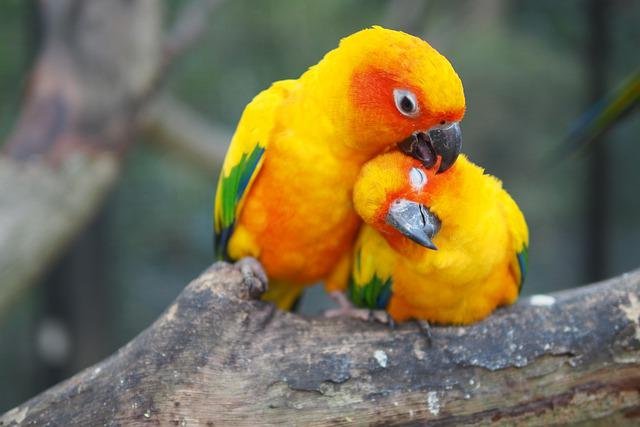
Conure
Size: 21cm -45cm
Lifespan: 12-30 years
Cost $350 – $3500
Conures originate from South and Central America and the Caribbean islands. They range in size from the smallest Pyrrhura species (21 cm) to the Patagonian Conure (45 cm).
Conures are popular pet birds. In particular, Green-Cheeked Conure, the Sun Conure, and Jenday conures are highly sought after. The Jenday conures are slightly less noisy than the sun conures. Their friendly natures allow them to bond well with people, but they generally have a limited ability for speech.
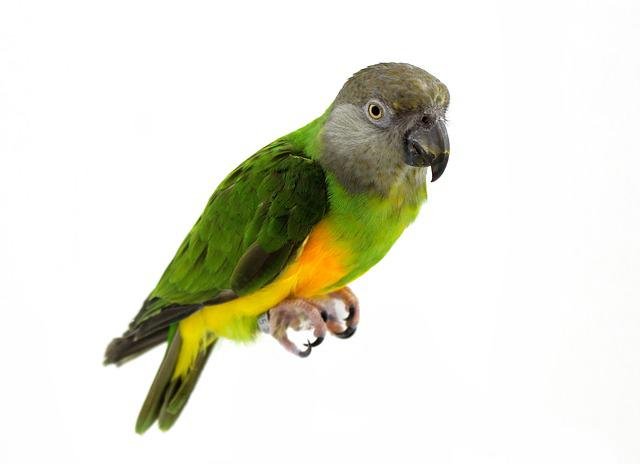
Senegal Parrot(Poicephalus family)
Other names:
Size: 23cm to 25cm
Lifespan: 25-30 years
Cost $350 – $3500
Senegal parrots originate from West Africa. They are suitable for keepers with limited space due to their small sizes and the fact that they are not too noisy. Although they can occasionally screech, they don’t tend to do it for long periods. Well-trained Senegals can be gentle and affectionate and display some very entertaining behaviors. They have the propensity for strong pair bonding, which means that they often bond to a single person in the family.

Caiques (Pionites melanocephala and Pionites leucogaster)
Size: 23cm
Lifespan: 20 years
Cost: $1600 – $3400
Two species of Caiques are commonly kept as pets. The black-headed caique (Pionites melanocephala) and the white-bellied caique (Pionites leucogaster) are native to South America.
Caiques have extremely high activity levels, and their acrobatic displays make them highly entertaining – a reason they are known as clowns of the bird world. Due to this, they do require lots of environmental enrichment, attention and positive reinforcement.
They frequently display behavior where they lay on their backs and ‘play dead. It is also common to see them running around instead of flying. They can emit loud calls at times but are not particularly good talkers.
Popular large parrots
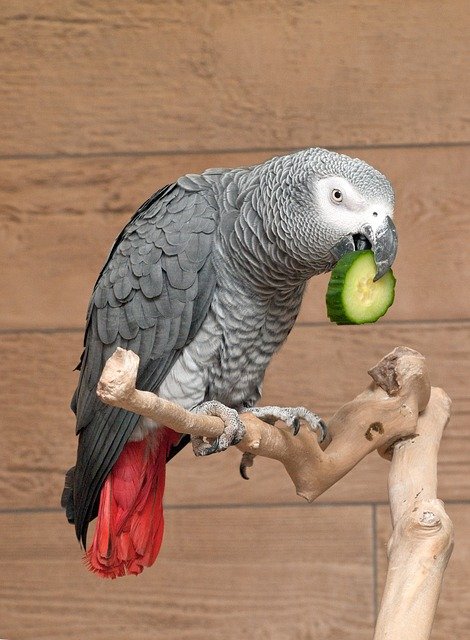
African Grey (Psittacus erithacus)
Size: 30-33cm
Lifespan: 30-50 years
Cost: $4000 – $7500
African Grey is a subspecies of Grey Parrot, which originate from central Africa and is one of the best-known caged birds worldwide.
They are known for their excellent ability to mimic sounds and high intelligence. They are social birds, so stimulation is essential, but they can be sensitive and prefer a quieter environment. If kept in an inappropriate setting, they can begin to display behavioral problems, including feather-destructive behaviors.
They can be fussy eaters and tend to selectively feed if provided with a seed-only diet. They also tend to be more susceptible to having low calcium levels. Hence, it is important to supply them with access to direct sunlight.

Macaw (Ara)
Size: 30-100cm (the largest of all parrots)
Lifespan: 30-50 years
Cost: $3,500 – $8,500 but $30,000 for Hyacinth Macaw!
Macaws originate from South and Central America and Mexico. Their size and bright colors make them very desirable pets worldwide. They are characterized by bare facial patches of varying sizes and long tails, at least as long as the body. However, they require a lot of attention if they are to be kept in captivity and are not a good choice for the novice parrot keeper. They are reasonably good at talking but are not as chatty as grey parrots or some of the amazon species. They vary in size from 30 cm (Noble Macaw) to Green-winged and Hyacinth macaws (100cm)
They can be demanding birds, and without enough attention, they can become destructive and noisy. Hyacinth and Blue and Gold macaws tend to be gentler.
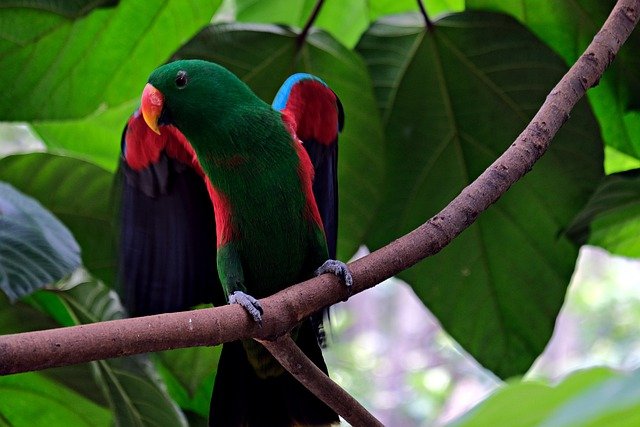
Eclectus (Eclectus roratus)
Size: 31-37cm long
Lifespan: Up to 30 years
Cost: $3000 – $5000
Eclectus Parrots are native to the forests of New Guinea, Indonesia, Australia and the Solomon Islands. They are tranquil birds, liked for their gentle nature. Males are predominantly green colored whilst the females are red with various shades of blue or purple. Because of their unique feather structure, feathers do not have a distinct outline; they look like they are covered with fine fur. They can develop quite an extensive vocabulary but are not known for excessive noisiness.
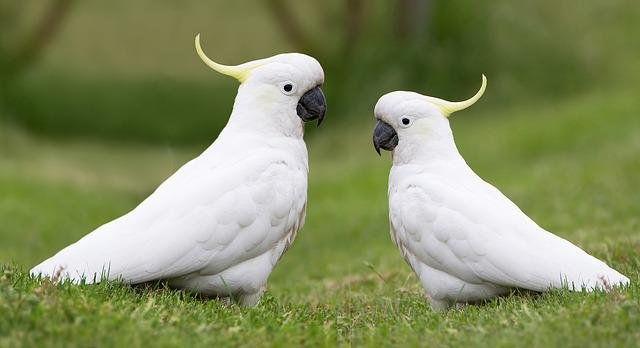
Cockatoos (Cacatuidae)
Other names:
Size: 30-70cm depending on the species
Lifespan: 20 – 80 years (varies depending on the species)
Cost: $3000 – $5500
Cockatoos are characterized by curved beaks and prominent crests on their heads which can look very impressive. They are not as brightly colored as other parrots, with their primary body color being white. Males and females can be differentiated by their iris color -males have black, and females have brown. There are 21 species of cockatoo that can be found in Australia, Papua New Guinea, Indonesia, the Solomon Islands, and the Philippines.
Cockatoos, like most parrots, are highly social birds living with flock mates in the wild. For this reason, if they are not provided with enough company and stimulation, they can display unwanted behaviors such as screaming, biting, and feather plucking.

Amazon Parrot (Amazona)
Size: 25-48cm
Lifespan: 40-60 years
Cost: $1,500 to $5,500
Amazon parrots originate from Central and South America, Mexico, and the Caribbean. They are primarily green-bodied, and each species can be distinguished by its head and neck colors and wing markings. They vary in size from 25cm for the White-fronted to 48 cm for the imperial. Males are larger and heavier than females.
Amazons are known to be intelligent, outgoing, and playful birds. They have a long life span of 40-60 years. Potential owners should note that males can become aggressive when reproductively active. If kept with a female, they must be closely monitored and appropriately housed to allow the female a place to escape.
Several of the Amazon species, particularly the Double Yellow-headed, Yellow-naped, and Blue-fronted Amazons, are known for their impressive talking ability.
They are great chewers and can be destructive to vegetation and household furniture. They must be kept active to avoid weight gain and the associated health-related issues.
.
Top 3 talking parrots
- African Grey
The African grey parrot is highly intelligent and is often regarded as the best talking bird. African Greys can repeat words after hearing them just once or twice, and some have been known to have vocabularies of hundreds of words. Researchers have suggested they have the same communication skills as a two-year-old child.
- Budgerigars
A Budgie called ‘Puck’ was recorded as ‘the bird with the largest vocabulary in the world’ in the 1995 Guinness Book of records. He was recorded as knowing 1728 words! However, Budgies have lower gravelly voices which can sometimes be challenging to understand.
- Amazon parrots
Amazon parrots can learn to speak with exceptional clarity, and they generally have lovely voices. They particularly like listening to music and singing.
Top 3 parrots for beginners
1. Budgerigars
Budgies are playful, entertaining companions that can develop a vast vocabulary. However, they don’t come with the expense of larger species. They are smaller, hardier and quieter than other parrots, which makes them an excellent pet for first-time bird owners.
2. Cockatiels
As with Budgies, Cockatiels have charming personalities, can learn tricks, and can build a vocabulary of different whistles. They are less likely to display the behavioral problems seen with larger parrots and are relatively undemanding in comparison.
- Conures
Conures make great pets because they are small and socialize well with humans. They like to be taught tricks and don’t make too much noise.
Top 3 colorful parrots
- Eclectus
The male Eclectus parrot is predominantly a vivid green color with red and blue accents whilst the females are red with various shades of blue or purple.
- Sun conures
These parrots have nearly the entire rainbow of colors on their bodies. Their vibrant plumage is a mix of red, yellow, and orange on their heads, chests, and wings. Their tail and flight feathers are green and blue.
- Scarlet macaws
Scarlet Macaws are beautiful parrots with vivid coloring of red, yellow and blue feathers.
References
Chitty, J., Monks, D. and British Small Animal Veterinary Association (2018). BSAVA manual of avian practice: a foundation manual. Gloucester: British Small Animal Veterinary Association, Cop.
Davis, B. (n.d.). Pet Birds & Parrots – Care, Behavior, Food and Pet Bird Facts – Pet Birds by Lafeber Co. [online] Lafeber® Pet Birds. Available at: https://lafeber.com/pet-birds [Accessed 9 Aug. 2022].
www.birdbreeders.com. (n.d.). BirdBreeders.com – Bird Breeders Directory of Availability and Parrot Breeders. [online] Available at: https://www.birdbreeders.com. [Accessed 9 Aug. 2022].
Guinness World Records. (n.d.). Largest vocabulary for a bird ever. [online] Available at: https://www.guinnessworldrecords.com/world-records/70967-largest-vocabulary-for-a-bird-ever [Accessed 10 Aug. 2022].


